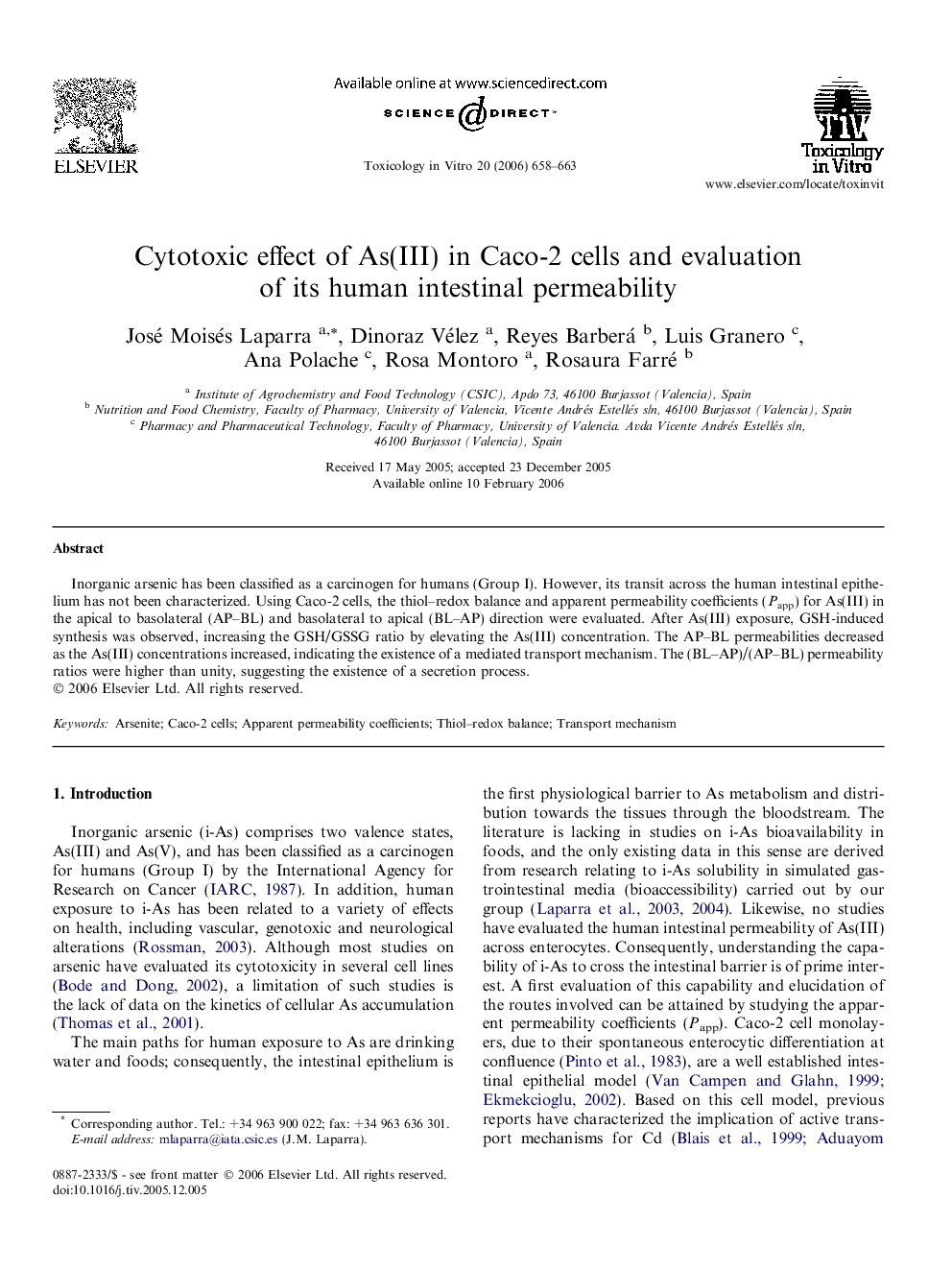| Article ID | Journal | Published Year | Pages | File Type |
|---|---|---|---|---|
| 2604002 | Toxicology in Vitro | 2006 | 6 Pages |
Abstract
Inorganic arsenic has been classified as a carcinogen for humans (Group I). However, its transit across the human intestinal epithelium has not been characterized. Using Caco-2 cells, the thiol–redox balance and apparent permeability coefficients (Papp) for As(III) in the apical to basolateral (AP–BL) and basolateral to apical (BL–AP) direction were evaluated. After As(III) exposure, GSH-induced synthesis was observed, increasing the GSH/GSSG ratio by elevating the As(III) concentration. The AP–BL permeabilities decreased as the As(III) concentrations increased, indicating the existence of a mediated transport mechanism. The (BL–AP)/(AP–BL) permeability ratios were higher than unity, suggesting the existence of a secretion process.
Related Topics
Life Sciences
Environmental Science
Health, Toxicology and Mutagenesis
Authors
José Moisés Laparra, Dinoraz Vélez, Reyes Barberá, Luis Granero, Ana Polache, Rosa Montoro, Rosaura Farré,
